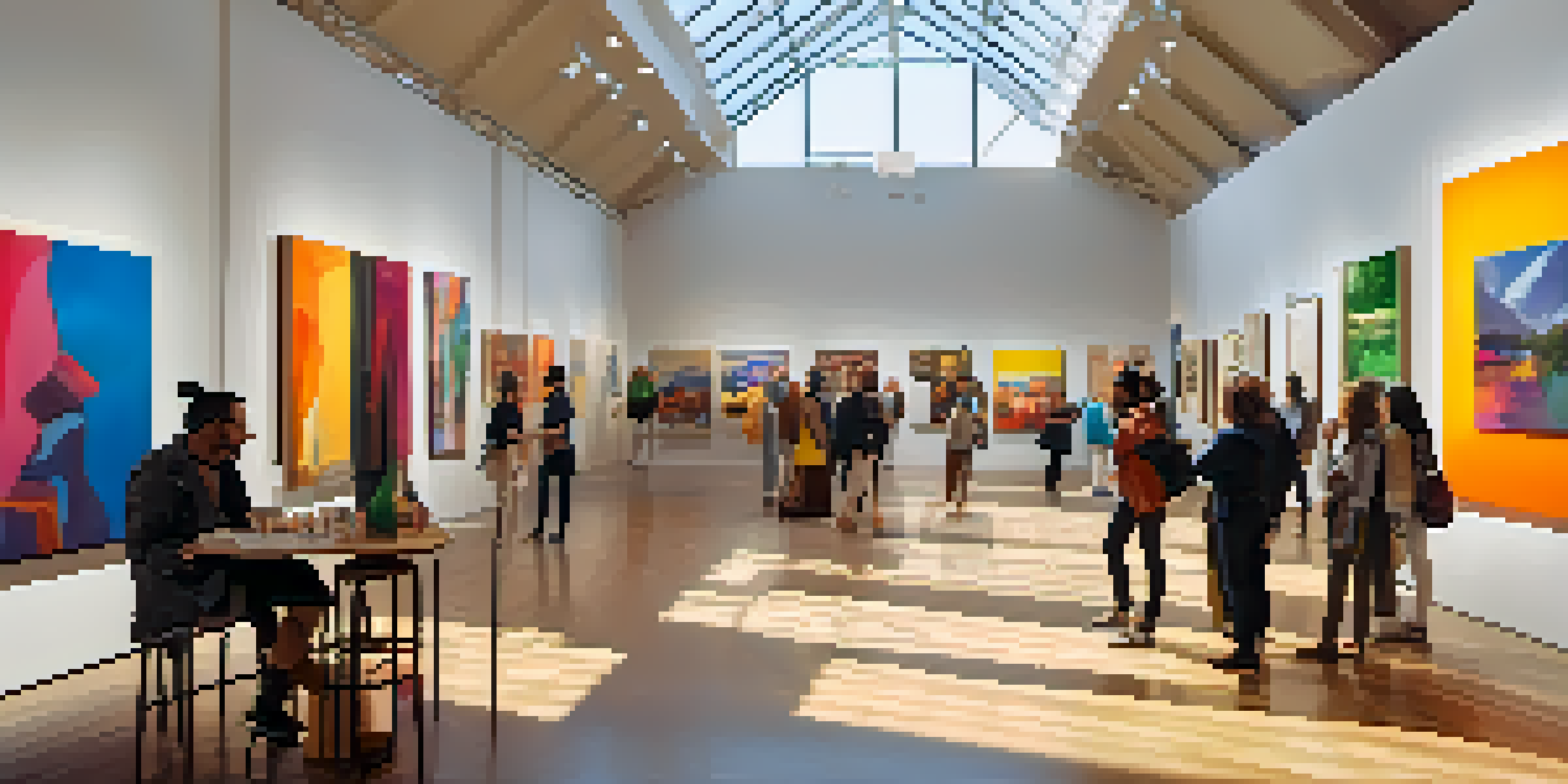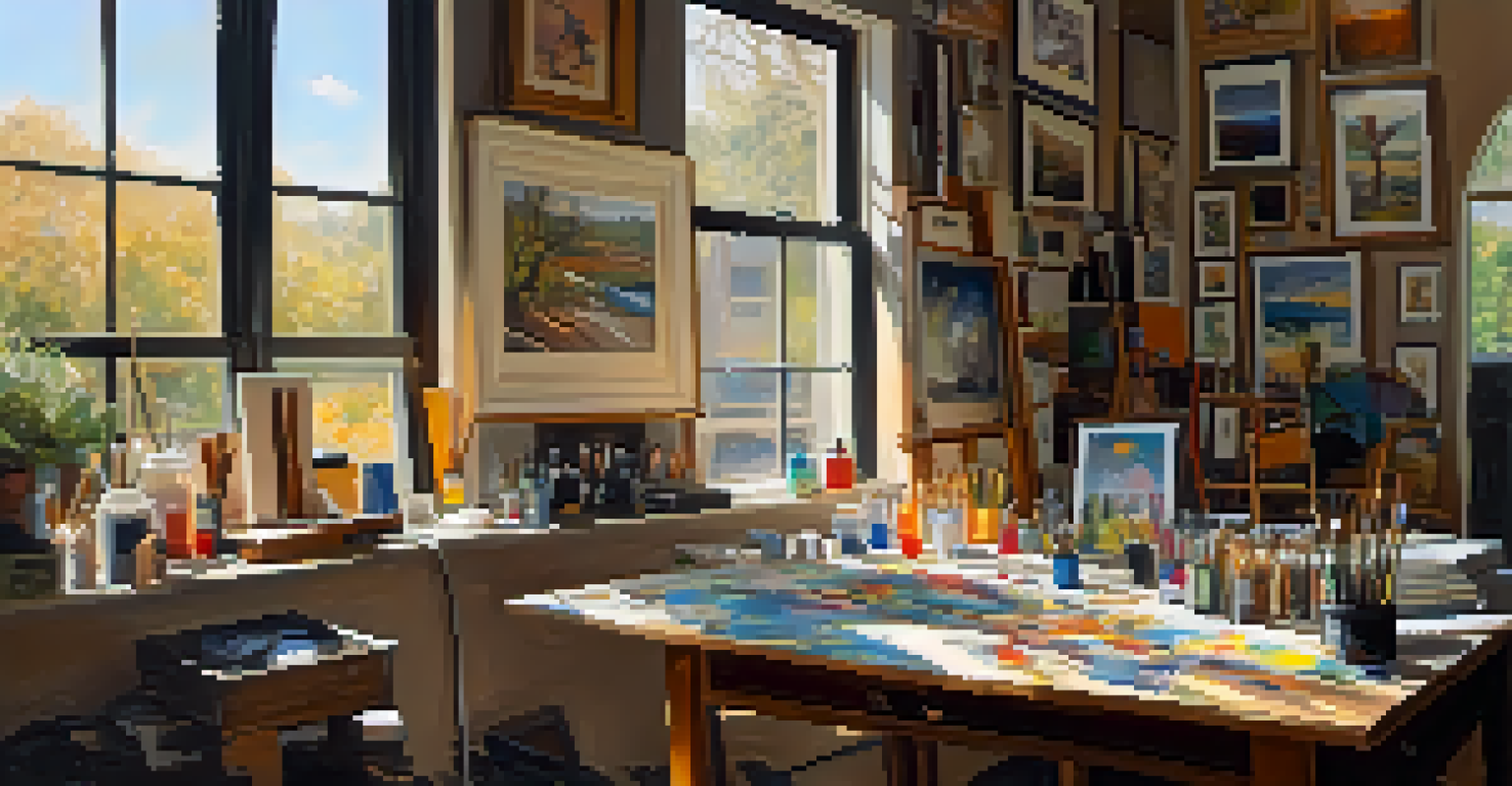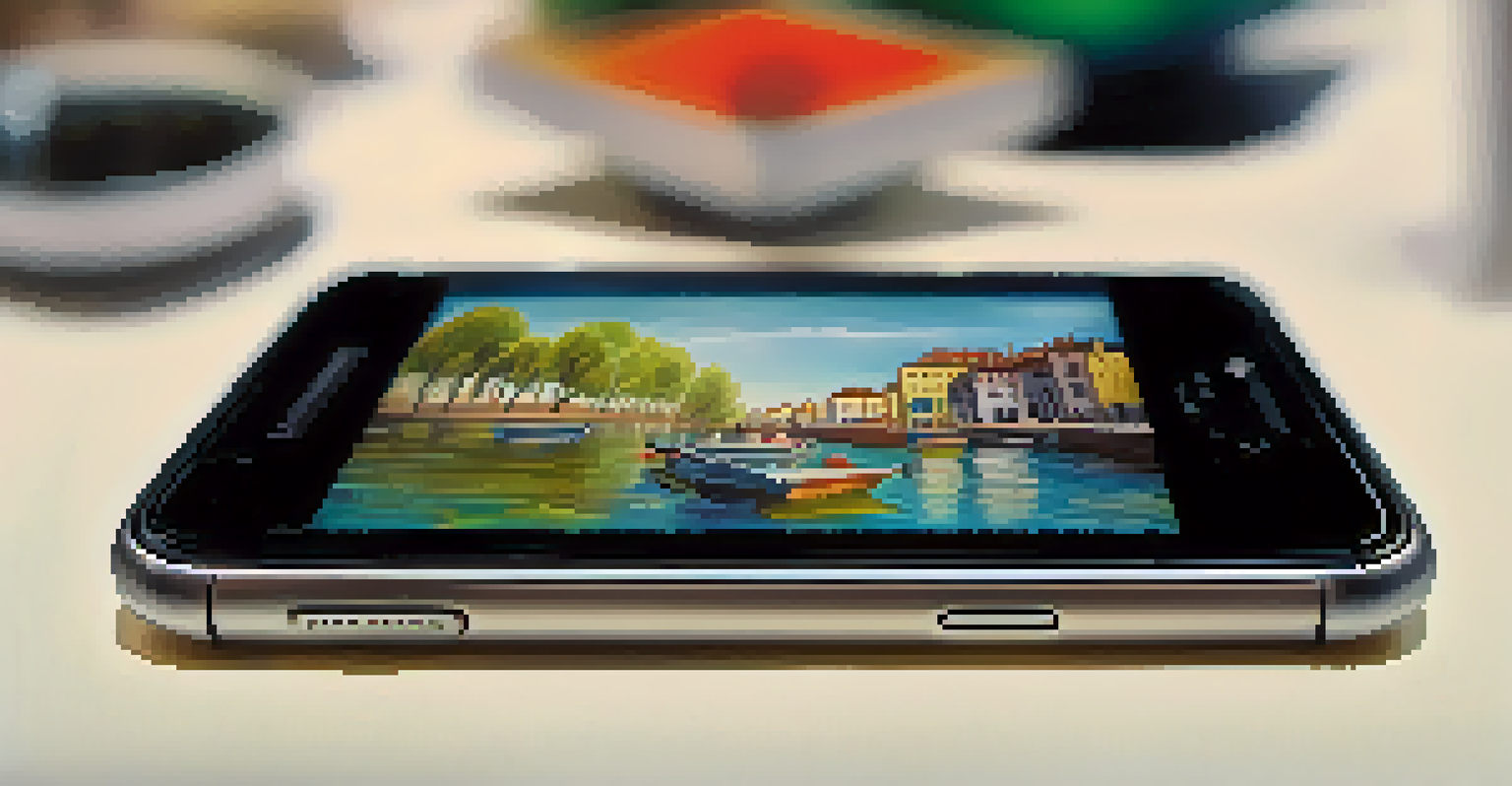Art Criticism in the Age of Social Media: New Challenges

The Evolution of Art Criticism in a Digital World
Art criticism has come a long way from traditional galleries and print media. With the advent of social media, the way we consume and critique art has been transformed. Platforms like Instagram and Twitter have democratized the art conversation, allowing anyone with a smartphone to share their thoughts and images.
The medium is the message.
This shift has made art more accessible, but it has also raised questions about the depth and quality of criticism. Instead of in-depth analyses, we often see quick impressions and emojis that can dilute the conversation. The challenge lies in balancing immediacy with insightful critique.
Moreover, the speed at which information travels can overshadow thoughtful discussions. While this accessibility is exciting, it necessitates a reevaluation of what we consider credible criticism in the age of instant feedback.
Social Media Influencers and Their Role in Art
Social media influencers have become key players in the art world, often wielding significant power over public opinion. Their large followings can amplify certain artworks or artists, sometimes overshadowing traditional critics. This shift can lead to a new form of art criticism that prioritizes popularity over expertise.

While influencers can bring attention to underrepresented artists, their motives are not always aligned with the principles of traditional art criticism. Some may prioritize aesthetics over context, leading to a more superficial understanding of the art. This raises the question: who gets to define what is valuable in art today?
Social Media's Impact on Art Critique
The rise of social media has democratized art criticism, but it also challenges the depth and quality of critiques.
As audiences increasingly turn to influencers for art advice, the distinction between genuine critique and marketing blur. This makes it essential for viewers to remain discerning and seek out well-rounded perspectives on art.
The Impact of Crowdsourced Opinions on Art Value
In the age of social media, crowdsourced opinions can significantly impact the perceived value of art. Platforms that allow users to vote or comment create a sense of community, but they can also lead to trends that favor certain styles or artists. This phenomenon can skew the understanding of what constitutes 'good' art.
Art enables us to find ourselves and lose ourselves at the same time.
For instance, a piece of art might receive hundreds of likes but lacks deep artistic merit or historical context. This can create a false narrative around the piece's value, overshadowing more nuanced works. Critics now face the challenge of navigating these trends while maintaining an objective viewpoint.
As the line between popularity and quality blurs, art critics must adapt their methodologies. They need to consider how to incorporate public opinion without compromising their expertise or the integrity of their critiques.
The Rise of Visual Communication in Art Critique
Visual communication has become paramount in art criticism, especially on platforms like Instagram. Critics are now required to convey their thoughts through images, videos, and short captions rather than lengthy essays. This shift has opened new avenues for expression but also presents challenges in conveying complex ideas.
While images can evoke immediate emotional responses, they may lack the depth needed for thorough analysis. Critics must find ways to balance visual appeal with substantive critique, ensuring that their messages are both engaging and informative. This requires a new skill set that combines artistry with analytical thinking.
Influencers vs. Traditional Critics
Social media influencers often prioritize popularity over expertise, complicating the landscape for traditional art critics.
Furthermore, the emphasis on visuals can lead to oversimplification. Critics must be cautious to ensure that their interpretations aren’t lost in translation, maintaining the richness of the art experience even in a fast-paced digital landscape.
Engagement vs. Authenticity in Art Commentary
Engagement metrics, such as likes and shares, have become crucial for art commentators seeking visibility. However, this focus on engagement can sometimes compromise authenticity. Critics may feel pressured to cater their opinions to fit popular trends rather than offering genuine, thoughtful insights.
When the primary goal becomes garnering attention, the integrity of art criticism can suffer. As a result, audiences may be left with a diluted version of art commentary, lacking the depth and rigor they once expected. Critics must navigate this fine line between being engaging and remaining true to their voice.
The challenge is to maintain authenticity without sacrificing reach. By staying committed to honest critiques, art critics can build a loyal following that values their perspective over mere popularity.
The Role of Traditional Critics in a Changing Landscape
Despite the rise of social media, traditional art critics still play a vital role in shaping the discourse around art. Their expertise and historical context provide depth that often cannot be captured in a tweet or Instagram post. However, they must adapt to the changing landscape to remain relevant.
This means engaging with digital platforms and finding new ways to reach audiences. Traditional critics can learn from influencers while maintaining their analytical rigor, creating a hybrid approach that values both expertise and accessibility. By doing so, they can bridge the gap between the old and new worlds of art criticism.
Evolving Formats for Art Commentary
Future art criticism will likely embrace new formats and diverse perspectives, blending traditional methods with modern engagement.
Ultimately, traditional critics have the responsibility to guide audiences through the noise of social media. By highlighting the importance of context and depth, they can enrich the conversation and elevate the overall quality of art critique in this new era.
Future Directions for Art Criticism on Social Media
As social media continues to evolve, so too will the landscape of art criticism. Emerging technologies and trends will shape how critics engage with audiences and how art is presented. This opens up exciting possibilities for innovative forms of critique that blend traditional methods with modern platforms.
Critics will likely explore new formats, such as live-stream critiques or interactive discussions, allowing for real-time engagement with audiences. This shift could foster a more dynamic conversation around art, enabling critics to respond to viewer feedback instantly and adapt their critiques accordingly.

Moreover, as the art world becomes increasingly globalized through social media, critics will have the opportunity to explore diverse perspectives. This fusion of voices can enrich art criticism, ensuring a more comprehensive understanding of art in its many forms.